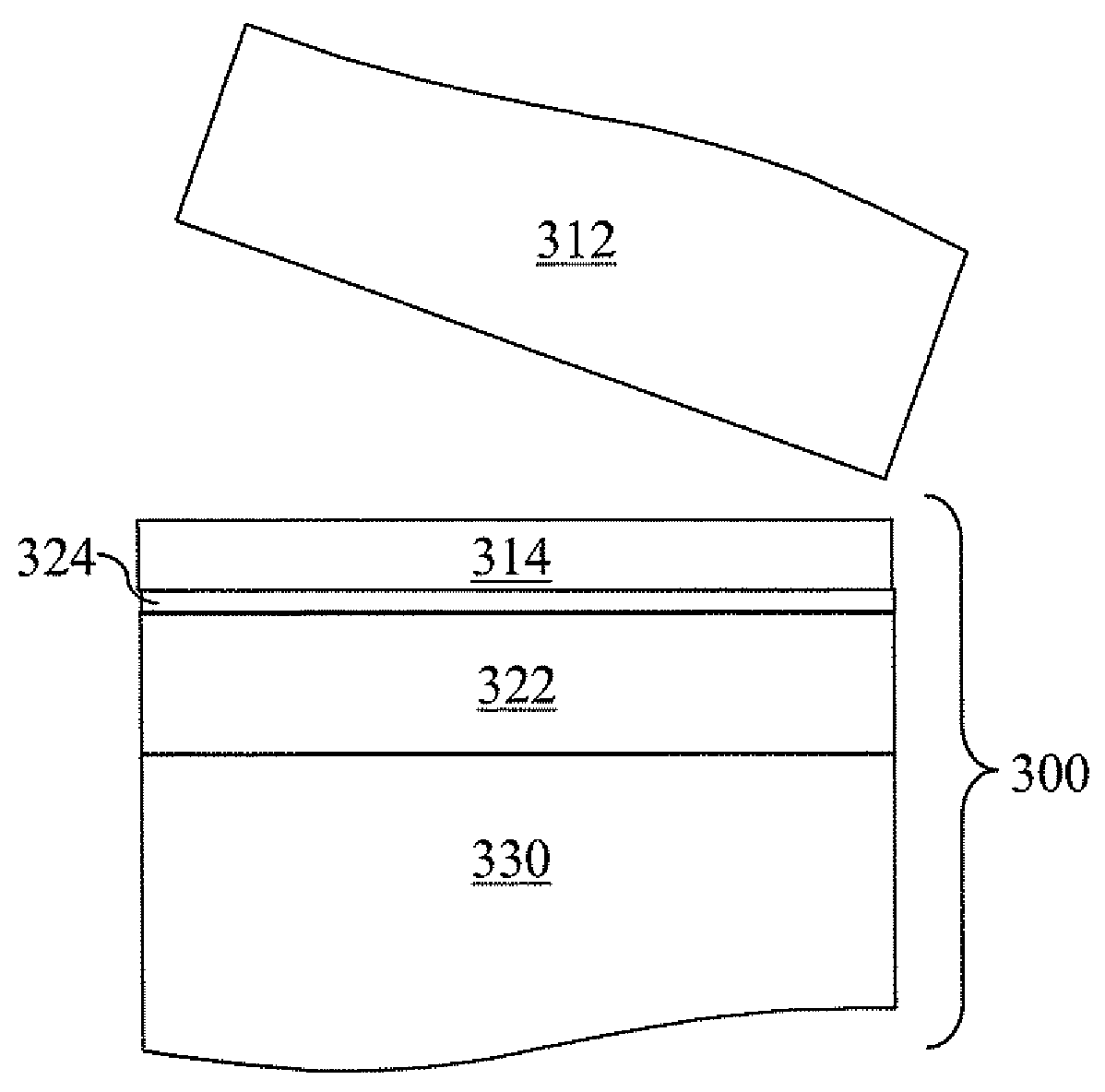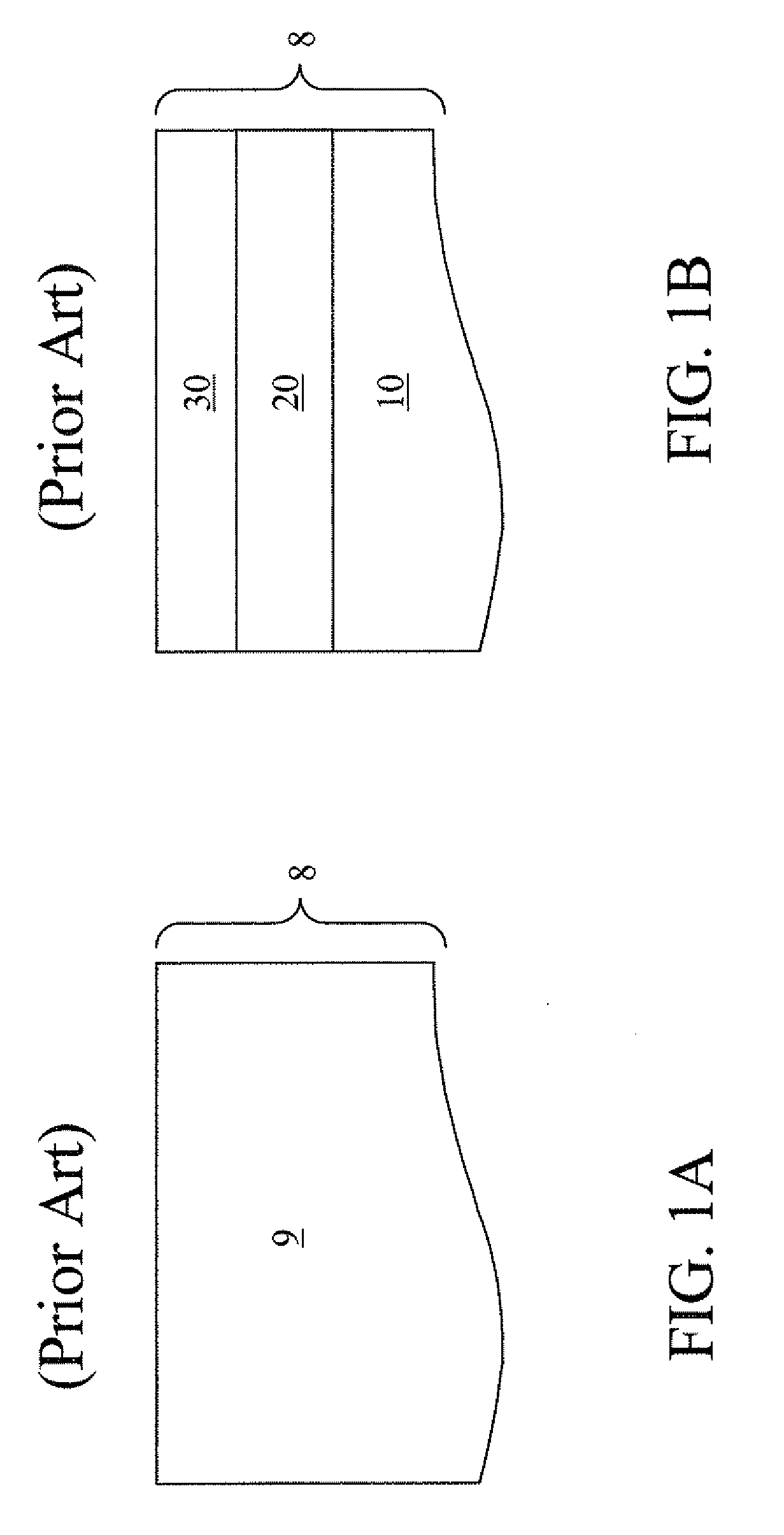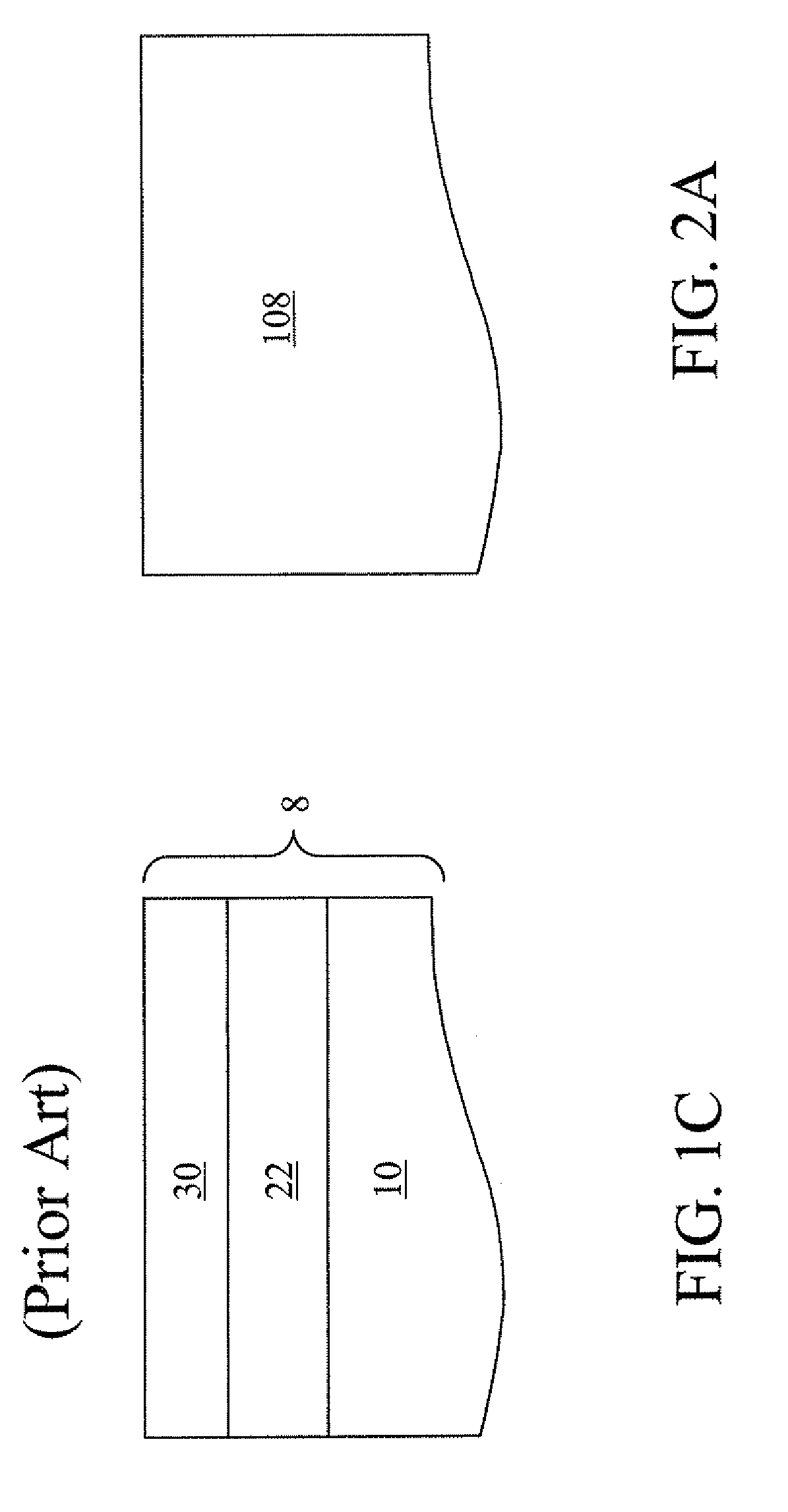Semiconductor-on-insulator substrate with a diffusion barrier
a technology of diffusion barrier and semiconductor, applied in the direction of semiconductor devices, semiconductor/solid-state device details, electrical apparatus, etc., can solve the problems of high interface trap density and charge in the buried oxide layer
- Summary
- Abstract
- Description
- Claims
- Application Information
AI Technical Summary
Benefits of technology
Problems solved by technology
Method used
Image
Examples
first embodiment
[0048]Referring to FIG. 2A, a first exemplary semiconductor structure according to the present invention comprises a semiconductor substrate 108. The semiconductor substrate 108 may be a bulk substrate at this point. The semiconductor substrate 108 comprises a semiconductor material such as silicon, a silicon germanium alloy, a silicon carbon alloy, a silicon germanium carbon alloy, a III-V compound semiconductor material, or a II-VI compound semiconductor material. The semiconductor material forms an insulating oxide when reacted with oxygen.
[0049]Referring to FIG. 2B, molecular oxygen ions (O2+) or atomic oxygen ions (O+) are implanted into the semiconductor substrate 108 in a high dose. Methods of forming a buried oxide layer by implanting oxygen ions followed by an anneal to form a buried oxide layer are known in the art as separation by ion implantation of oxygen (SIMOX). The molecular oxygen ions (O2+) or atomic oxygen ions (O−) are implanted into the semiconductor substrate e...
second embodiment
[0060]Referring to FIG. 3A, a second exemplary semiconductor structure according to the present invention comprises a first semiconductor substrate 208 which contains a first semiconductor layer 210. An oxide layer 222 and an oxynitride layer 224 are formed in the first semiconductor substrate 208. The oxide layer 222 may be formed by thermal oxidation of the semiconductor material in a top portion of the first semiconductor layer 210, and the oxynitride layer 224 may be formed by diffusing a nitridating gas through the oxide layer 222 and causing reaction of the nitridating gas with the semiconductor material in the first semiconductor layer 210 at an interface with the first semiconductor layer.
[0061]The thermal oxidation of the top portion of the first semiconductor layer 210 to form the oxide layer 222 and formation of the oxynitride layer 124 may be concurrent or sequential. In case the oxide layer 222 and the oxynitride layer 224 are formed concurrently, the first semiconducto...
third embodiment
[0071]Referring to FIG. 4A, a third exemplary semiconductor structure according to the present invention comprises a first semiconductor substrate 308 that contains a first semiconductor layer 310 and a diffusion barrier layer 324. The diffusion barrier layer 324 may comprise a high-k dielectric material having a dielectric constant greater than 3.9 or silicon carbide. A high-k dielectric material may be a metal oxide, a metal oxynitride, a metal silicate, and alloys, mixtures, or multilayers of the same. The high-k dielectric materials are typically referred to as high-k gate dielectric materials, which are employed in advanced semiconductor devices to enable scaling of state-of-the-art field effect transistors. Non-limiting examples of the high-k dielectric materials include hafnium oxide, hafnium silicon oxide, lanthanum oxide, lanthanum aluminum oxide, zirconium oxide, zirconium silicon oxide, tantalum oxide, titanium oxide, barium strontium titanium oxide, barium titanium oxide...
PUM
| Property | Measurement | Unit |
|---|---|---|
| dielectric constant | aaaaa | aaaaa |
| thickness | aaaaa | aaaaa |
| dielectric constant | aaaaa | aaaaa |
Abstract
Description
Claims
Application Information
 Login to View More
Login to View More - R&D
- Intellectual Property
- Life Sciences
- Materials
- Tech Scout
- Unparalleled Data Quality
- Higher Quality Content
- 60% Fewer Hallucinations
Browse by: Latest US Patents, China's latest patents, Technical Efficacy Thesaurus, Application Domain, Technology Topic, Popular Technical Reports.
© 2025 PatSnap. All rights reserved.Legal|Privacy policy|Modern Slavery Act Transparency Statement|Sitemap|About US| Contact US: help@patsnap.com



